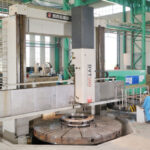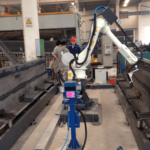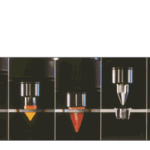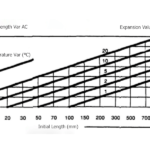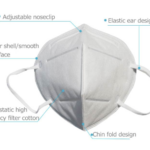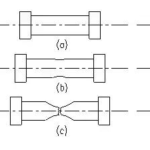General description
Dual-phase stainless steel, commonly known as Duplex stainless steel (DP steel or DSS),is a low-Nickle (4.5-6.5) stainless steel, because of its metallurgical structure containing two phases, ferrite (body centered cubic lattice) and austenite(face-centered cubic lattice) each with about 50% percentage respectively, it takes good characteristic from both austenitic and ferritic, ie. has good mechanical properties, corrosion resistance, and also weldability.
Historical development and its advantage
The DSS was firstly produced in USA from 1940s,and is in its 3rd generation as of 2020 now. the biggest advantage of DSS is high yield strength up to 400-550Mpa, almost double of usual single phase stainless steel. Hence,it can save usage of steel,therefore reduce general cost.
The 2nd biggest advantage is good performance in anti-corrosion, especially in the bad circumstance such as sea water, Chloridion rich area, compared to usual austenite stainless steel, DSS has much better resistance in pitting corrosion, crevice corrosion, and stress corrosion, and also its fatigue of corrosion is also very low, that only high alloy austenite stainless steel can compete with it.
Other advantages of DSS are:
l High ultimate tensile strength(UTS, enabled by the martensite),with low initial yield stress (provided by the ferrite phase)
l Low yield to tensile strength ratio (yield strength / tensile strength = 0.5) which is good to prevent sudden failure of metal component.
l High initial strain hardening rates
l Good uniform elongation
l A high strain rate sensitivity(the faster it is crushed the more energy it absorbs)
Disvantages of DSS:
Compared to austenite stainless steel(ASS)
1 DSS is not as universal suitable as ASS,eg,can not be used under 250℃
2 Plasticity and toughness lower than austenite ASS, therefore its cold forming and hot forming performance is somehow inferior
3 There exists mid-temperature brittleness area, need to be careful to generate harmful phase during heat treatment or welding procedure
Nevertheless, thanks to its excellent advantages described before, DSS has become more and more popular to be used in heat exchangers and pipes for the industries of oil, nature gas, paper making, fertilizer, marine engineering, chemical, and has also become widely used to make structural components in the industries of bridge, air plane, ship, automotive etc.
Nowaday, there are mainly four types of dual-phases stainless steel (DSS) classified by alloy content,each country has different grade, below listed is that of six contries:
|
Duplex stainless steel(DSS) classified by alloy content |
||||||
|
Type name |
China |
USA |
Sweden |
Germany |
France |
Japan |
|
Low Alloy DSS |
00Cr23Ni4N |
UNS-S32304 |
SS2327 |
W.Nr.1.4362 |
UR35N |
DP11 |
|
Mid Alloy DSS |
00Cr18Ni5Mo3Si2 |
UNS-S31500 |
SS2376(3RE60) |
W.Nr.1.4417 |
UR45N |
DP1 |
|
High Alloy DSS |
00Cr25Ni5Mo2 |
UNS-S32900 |
SS2324(10RE51) |
W.Nr.1.4460 |
329J1 |
|
|
Super DSS |
00Cr25Ni7Mo4N |
UNS-S32750 |
SS232(SAF2507) |
W.Nr.1.4410 |
UR47N+ |
|
We just finished a custom machining job– end rings for environment protection machine which is used in chloride circumstance.
The rings are made of Duplex stainless steel SAF 2205 with thickness 16mm.
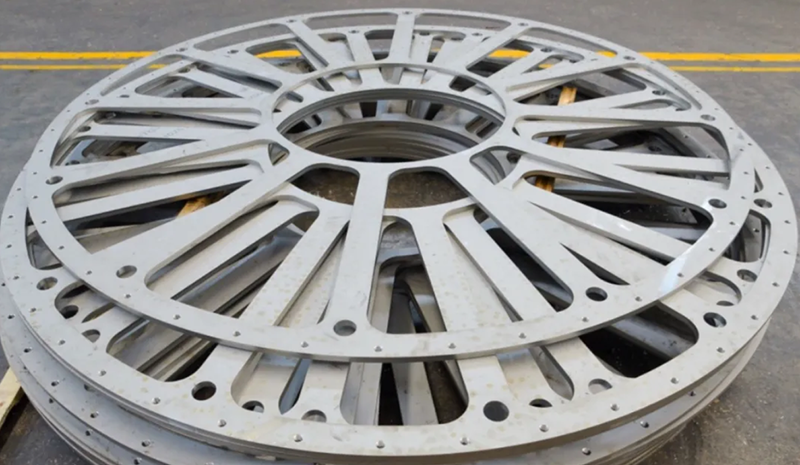
Here below is the chemical composition for SAF2205:
C≤0.030 Mn≤2.00 Si≤1.00 p≤0.030 S≤0.020 Cr 22.0~23.0 Ni 4.5~6.5 Mo3.0~3.5 N0.14~0.20
Compared with single phase stainless steel 304 and 316L, DSS SAF2205 has better performance, especially on anti-chloride corrosion.
|
Comparison between dule phases stainless steel SAF2205 and single phase stainless steel 304 and 316L |
||||
|
SAF2205 |
304 |
316L |
Remark |
|
|
Anti-chloride corrosion |
>1000 |
47 |
152 |
Time got corrosion and breakage(h) |
|
PREN |
35.4 |
18.4 |
25.9 |
Pitting resistence equivalent numbers, the larger the better |
|
Anti-inter-crystalline corrosion |
The best |
Normal |
Better |
|
|
Anti-uniform corrosion |
0.021 |
57 |
12.1 |
20%H2SO4 |
|
Anti-fatigue |
The best |
Normal |
Better |
|
|
Tensile strength |
620 |
485 |
485 |
Rm((Mpa)≥ |
|
Yield strength |
450 |
170 |
170 |
Rm((Mpa)≥ |
|
Elongation |
25 |
40 |
40 |
Rm((Mpa)≥ |
|
Hardness |
290/30.5 |
187/90 |
187/90 |
Rm((Mpa)≥ |
|
Thermal conductivity |
19 |
18 |
15 |
20-100℃ |
|
Liner thermal expansion |
13.7 |
16 |
16 |
20-100℃ |
|
Weldability |
Excellent |
Good,but can not have pre-heating or post-heating to rectify deformation |
Might get crackle in high temperature |
|
|
General performance |
The best |
Normal |
Better |
|
It is reported that a Seamless pipe made of SAF 2205has been used for an 850km long pipeline to pump the LNG across China from the western to eastern, thanks to its excellent mechanical properties and weldability.
Link to this article:Dual-phase stainless steel
Reprint Statement: If there are no special instructions, all articles on this site are original. Please indicate the source for reprinting.:Casting Wiki,THANKS!^^

